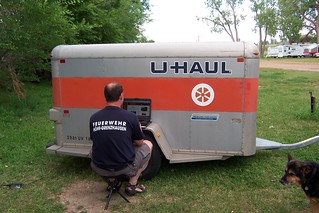 This blog originally appeared at the TechSoup blog space in March 2014:
This blog originally appeared at the TechSoup blog space in March 2014:
At the start of any workshop I lead related to virtual volunteering, I ask the audience, “How many of you are engaging with volunteers virtually?” If few or no people raise their hands, I ask the question again at the end of my workshop. And the numbers always change.
Take for example the webinar I did recently for TechSoup’s audience on the best assignments for online volunteers. As usual, I ask a few minutes into the workshop how many people were involving online volunteers. The results:
Yes: 32%
No: 68%
So I went through the workshop and then, at the end, asked the question again. This time:
Yes: 58%
No: 42%
The term “virtual volunteering” is a contested term. Some people define oh-so-strictly: remote volunteers who never come on-site at an organization, and all of their service is conducted online. That means people who translate documents wouldn’t be considered online volunteers, because they aren’t actually using the Internet for their service, they are using their skills. So often, organizations are involving online volunteers – they are engaging in virtual volunteering – but because of the definition they’ve decided upon before the workshop, they have no idea they are engaged in the practice.
That’s why, at the start of any workshop, after the first poll of the room or the webinar attendees, I offer my definition of virtual volunteering:
Volunteers completing tasks, in whole or in part, off-site from the organization being assisted, using any Internet-connected device (computer, smart phone, etc.).
That means a volunteer could perform most of his or her service for an organization on-site, but if he or she is doing some of the service from home – designing a logo, tagging photos with keywords, writing an article for a newsletter, participating in an online community of fellow volunteers – that person is also engaging in virtual volunteering.
Offering that broader definition at workshops makes people realize that, indeed, they are engaging with volunteers online, and a workshop about virtual volunteering isn’t going to help them introduce the practice; it is, instead, going to help them expand what they are already doing.
 In Digital Engagement branch of the TechSoup Community forum!
In Digital Engagement branch of the TechSoup Community forum!




